MacBook Air 2018 Review
MacBook Air 2018 Review
If you have the budget, then this MacBook Air offers a proper upgrade on past iterations
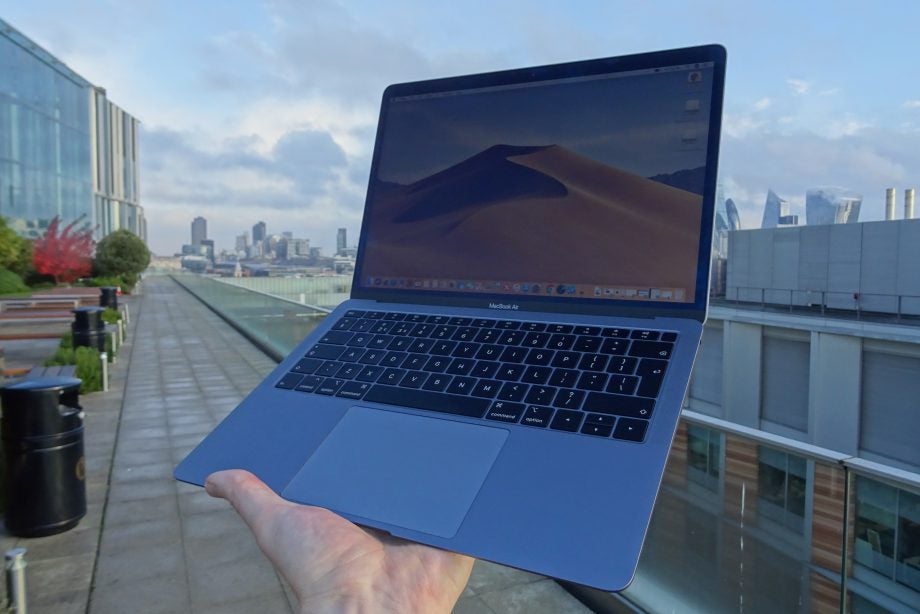
Verdict
The MacBook Air 2018 is a streamlined and powerful laptop brimming with up-to-date features.
Pros
- A classic design, refreshed for 2018
- Lightweight, premium-feel body
- Retina Display screen
- Pro features for a lower price
Cons
- Only has two USB-C ports
Key Specifications
- Review Price: £1199
- 13.3-inch high resolution screen (2560 x 1600)
- Touch ID fingerprint scanner for fast unlocking and secure purchases
- Butterfly-switched keycaps allows for a shallower keyboard
- T2 chip for added security features
What is the Apple MacBook Air 2018?
The new MacBook Air 2018 range has finally arrived. And by “finally” I mean Apple has given this much-loved laptop a proper update, instead of the iterative upgrades we’ve seen with the past few versions.
As well as rocking a Retina Display, which packs a resolution of 2560 x 1600 into a 13.3-inch panel, there’s the T2 security chip, which automatically encrypts your files and offers a secure boot option. That latter is likely to be mainly of interest to IT professionals, sysadmins or whoever buys the laptops for your company. But for everyday consumers, the T2 chip offers a level of security that, until now, has only been available to MacBook Pro 2018 and iMac Pro buyers – and, later this year, to anyone snapping up a Mac Mini 2018.
In terms of looks, the new MacBook Airs retain that classic wedge shape, which set the bar over ten years ago. Many laptops sport this look these days, but it’s Apple that can take much of the credit for that.
Compared to the 2017 MacBook Air lineup, this year’s models are about 10% thinner, with a smaller footprint. Apple says this has shaved just over a centimetre from the x and y-axis.
In addition, you get more up-to-date processors running the show and up to 16GB of RAM – a clear improvement on the 8GB maximum seen in the previous generation.
Related: Best MacBook
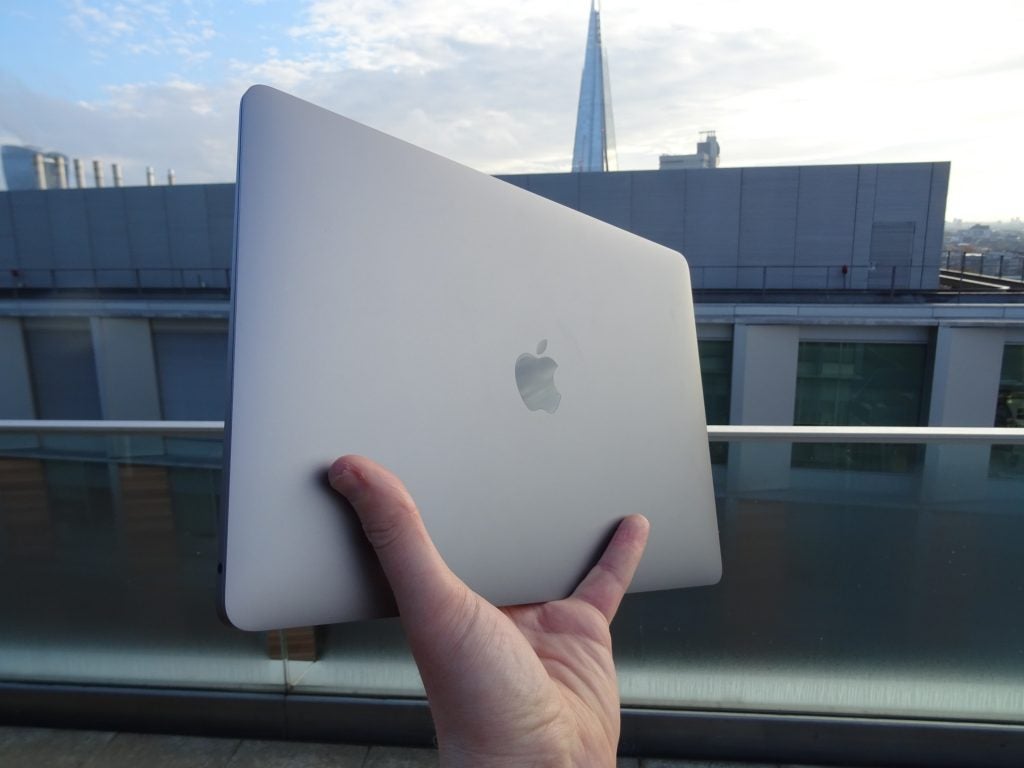
Apple MacBook Air 2018 – Design and features
The new MacBook Air is business as usual – but thinner, better, faster, smoother. Slimming down means it weighs just 1.25kg. That’s an impressive feat, considering the unibody case is an aluminium-heavy alloy, instead of the lighter and flexier magnesium-based material seen on competing devices, such as the 1kg LG Gram.
In the days I’ve spent lugging the MacBook Air around, there have been times I’ve barely noticed it’s there. Although prior to this, I’d been using the very chunky, 2.4kg Asus ROG GL504 Hero II gaming laptop as my daily driver, so that may be part of the reason for that. The only downside to the slim design is that the port lineup consists of just two USB-C ports, both supporting the Thunderbolt 3 standard.
The use of Thunderbolt at least means you can benefit from video passthrough (using the DisplayPort 1.2 video standard) data rates of up to 40Gbps, for example, and the ability to daisy-chain. As a result, you can set up the MacBook Air as the nexus of a powerful home studio with the right cables and peripherals.
Right out of the box, however, you’re limited. Note that most of the time, one of those USB-C ports will be taken up by the mains adapter, so in essence you have only one USB-C port at your disposal.
There are a greater number of peripherals these days supporting the Thunderbolt standard, which is a good thing, but that’s only a benefit if you have a sizeable monitor with lots of extra connections, or a dock that you had to buy to use with a previous MacBook. Not to mention a budget/credit rating ample enough to accommodate the extra expense.
As with the MacBook Pro 2018, Apple doesn’t even include a USB-C to Ethernet adapter – a freebie that most other laptop manufacturers are happy to throw in with their high-end models.
Connectivity aside, the design remains impressive. Apple says that this generation of MacBook Airs is the first to feature a case that’s made entirely from recycled metal. Apparently, it’s formed from the shavings that remain of the blocks of metal from which other MacBooks have been machine milled. These shavings are simply gathered up and re-smelted, instead of using material that’s been mined, extracted and smelted from bauxite.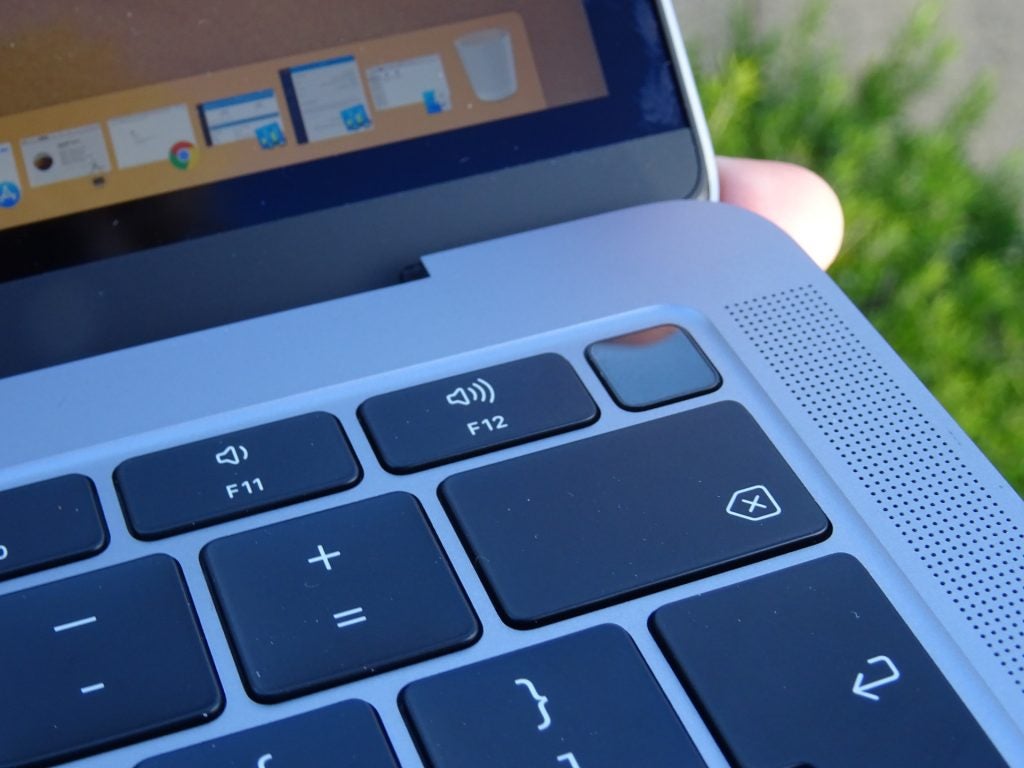
The company claims the 2018 MacBook Airs are the greenest laptops yet, and this step is being taken as part of a wider drive to reduce the entire company’s carbon footprint by 50%. The cases of the new Mac Minis will also be fashioned in the same way.
While I haven’t analysed Apple’s entire supply and manufacturing chain, or enquired as to whether or not that 50% figure includes manufacturing partners (and neither is this review really the place for that kind of analysis), we can all appreciate the fact that leftover materials that would otherwise be sold on are being repurposed. I also quite like the idea that the MacBook Air I’ve been holding in my hands might have once began life as a MacBook Pro, or maybe even an iPad Pro.
Bookending the keyboard are two sets of speaker grilles. Apple boasts that the speaker system is the most powerful ever seen on a MacBook Air, offering a wonderfully wide sound stage thanks to the inclusion of two new bass units (one on each side, natch).
I don’t have access to any sound level meters or data taken from previous-gen MacBook Air reviews in order to verify this, but having listened to music and watched TV shows on many laptops, I can affirm that the audio quality is generally very good, with lots of spatial separation between instruments and stereo panning.
Listening to the Broadway cast recording of Hamilton on Spotify was particularly pleasing. The crack of the snare drum on “My Shot”, for example, cut right through the swelling strings, brass, lead and backing vocals like a knife. The low end on the likes of Metallica’s “Master of Puppets”, and Rage’s “Bullet in the Head” sounded nice and bouncy. High-end noise, however, of the type that featured in Igorrr’s ‘Infinite Loop’ sounded a little tinny at full volume.
That said, the speakers on the MacBook Air are definitely a cut above what I’ve heard on most other laptops.
Apple MacBook Air 2018 – Keyboard and trackpad
The MacBook Air 2018 comes with the same third-generation butterfly-switch keyboard that we first saw on the MacBook Pro 2018 – and it’s something of an opinion divider.
Personally, I’ve grown to it. But there’s no denying that the keycaps have incredibly shallow travel. This, coupled with the fact the MacBook Air will typically lie flat on your desk (it isn’t angled up towards your hands, like, say, the keyboard dock of the Microsoft Surface Pro 6), does make for an odd sensation.
If you’re coming from a non-butterfly switch model then it will take you some time to get used to the MacBook Air 2018’s keyboard. I can normally comfortably cruise at around 80 words a minute on Type Racer, but I was dropping typos all over the place with the MacBook at first.
Despite my initial fumbling, I like the keyboard layout. Nothing feels too cramped and, with the exception of the up and down arrow keys, most of the keycaps are generously sized.
The trackpad is also very smooth and whip-smart, so much so that I’ve actually had to dial down its responsiveness in the settings. I had to do that with the MacBook Pro, too, mind. Thankfully, and unlike the MacBook Pro, I haven’t encountered any flexing.
Force Touch, a setting that lets you tap gently on the trackpad instead of clicking down, is turned on by default. Personally, I’m not a fan, as I find that it’s easy to mistakenly click on links when browsing the web. It’s easy to switch off, however.. Clicking sensitivity can also be easily configured from the same settings menu, so whether you use Force Touch or not, you should be able to fine-tune this.
Touch ID is another great addition. The MacBook Air’s power key features a built-in fingerprint scanner that lets you quickly unlock the laptop if it’s in sleep mode. The feature is optional – you can choose to lock the MacBook Air with a PIN or password, if you wish – but I found it to be as fast and convenient as it was on the MacBook Pro 2018.
If you’re paranoid about Apple sneakily storing your fingerprint data on a remote server and a digital copy being stolen by hackers, you needn’t worry. All of your biometric data is stored directly on the T2 security chip; when you reset the laptop to factory settings, it will be erased.
While I don’t tend to buy many things off iTunes, I did like that I was able to buy stuff with the tap of my index finger, instead of having to enter my incredibly long and difficult-to-guess Apple password every time.
Related: Best laptop 2019
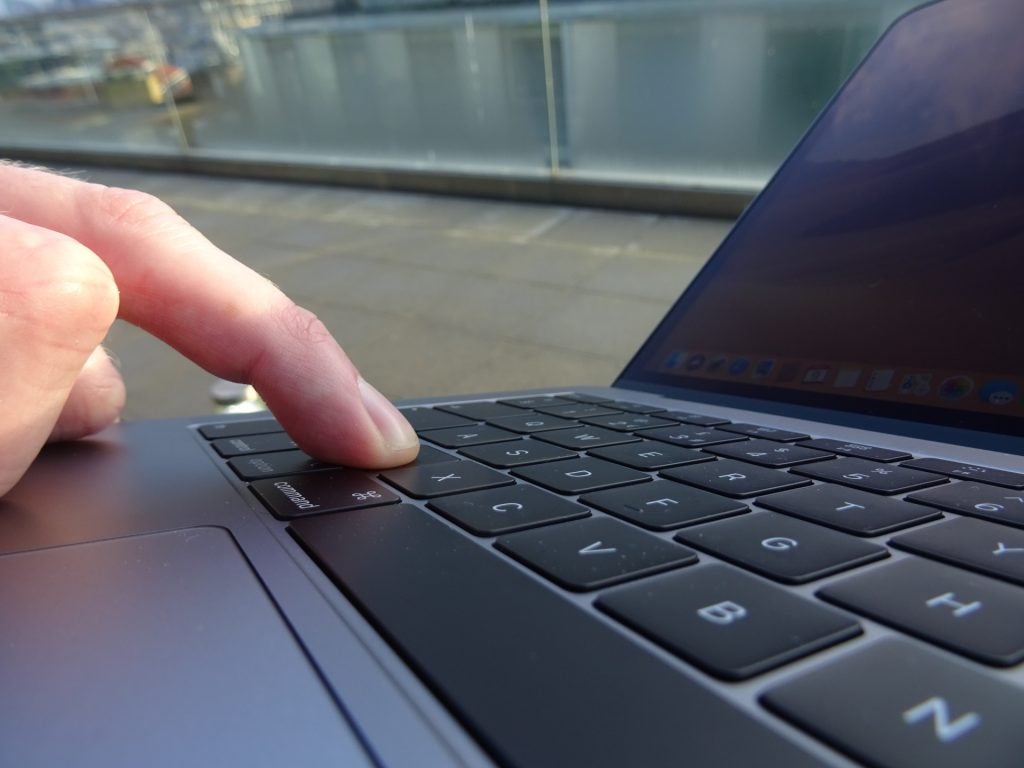
Apple MacBook Air 2018 – Display
The MacBook Air’s screen measures 13.3-inches diagonally and crams 2560 x 1600 pixels into that space. This gives you a pixels per inch (ppi) count of 226.9.
Everything looks pin sharp, whether that’s photos, video, web pages – even the serifs on typed text look the business.
Using an X-Rite i1 Display Pro colorimeter and DisplayCAL software, I recorded 304.48 nits of maximum brightness. With the screen cranked all the way up, I recorded black levels of 0.6 nits. Both results give us a contrast ratio of 501:1. These results are about the standard of what you should expect from a product line that starts at just over a grand.
A figure of 300 nits is absolutely fine for working and watching movies, but it might be a little dark for anyone wanting to do some photo editing. By contrast, the MacBook Pro 2018 I tested earlier in the year gave me an extremely high 514 nits of peak brightness.
Colour gamut coverage is in line with what I’d expect from a premium device. The MacBook Air’s screen hit 93.3% of the sRGB colour space, which is what most people will use/notice. This means web pages and any content you’re working on will look rich and vibrant. It’s a cliché to say that colours “pop” on laptop displays, but they really do on the MacBook Air’s screen.
Coverage of the Adobe RGB and DCI-P3 gamuts favoured by digital photographers was less impressive. Generally, anything scoring 80% or above in these spaces will be serviceable, but I got 68.2% and 70.8% respectively. If you primarily want a device for creative work, you ought to be looking at the MacBook Pros anyway.
All the same, here’s how the MacBook Air’s screen compares to similarly priced and specced rivals in terms of colour space coverage:
| sRGB | Adobe RGB | DCI-P3 | |
| Apple MacBook Air 2018 | 93.3% | 68.2% | 70.8% |
| LG Gram 14Z980 | 94.9% | 67.5% | 70.6% |
| Microsoft Surface Pro 6 | 90.2% | 62.4% | 64.2% |
| Apple MacBook Pro 2018 | 100% | 84% | 98.9% |
In summary, the Apple MacBook Air’s display is excellent. It isn’t quite as good as that of the 13-inch MacBook Pro, which also benefits from Apple’s True Tone software – but again, the Pro’s screen is best-in-class.
Related: Best student laptop
Apple MacBook Air 2018 – Performance
In this section I’ve added benchmark results from the LG Gram and Microsoft Surface Pro 6, as well as the 13-inch MacBook Pro 2018, to provide an idea of how this compares to Windows 10 devices in a similar price range, and to the more powerful Pro.
For general work performance, the MacBook Air 2018 is a solid performer. The disk read and write speeds of the MacBook Air I recorded were excellent, suggesting that saving your work, launching projects and apps will be super-quick.
This bore out in my personal experience, with Spotify, iTunes, Chrome and pretty much any application I launched literally leaping into action.
Despite the MacBook Airs not really being suited for high-end gaming or video editing, I ran Cinebench to better gauge its CPU and GPU performance, along with Geekbench 4, a CPU stress test.
| Apple MacBook Air 2018 (i5-8210Y) | LG Gram 14Z980 (i5-8250U) | Microsoft Surface Pro 6 (i5-8250U) | Apple MacBook Pro 2018 (i7-8559U) | |
| Geekbench 4 single-core | 4248 | 4085 | 4080 | 5378 |
| Geekbench 4 multi-core | 7820 | 11888 | 13913 | 18885 |
| Disk read speeds* | 2036.2 MB/sec | 550.6 MB/sec | 1640 MB/sec | 2281.1MB/sec |
| Disk write speeds* | 1091.9 MB/sec | 504.9 MB/sec | 807 MB/sec | 2631.2MB/sec |
| Cinebench CPU | 252cb | TBC | 595cb | 594cb |
| Cinebench OpenGL | 34.08fps | TBC | 46.25fps | 38.51fps |
Editor’s Note: Disk read and write speeds for Windows 10 devices are currently calculated with CrystalDiskMark, which isn’t available for macOS. For macOS devices, we use Blackmagic.
While these numbers aren’t totally reflective of the MacBook Air’s overall performance, they should at least provide an idea of how it will handle everyday tasks compared to key rivals.
For everyday work, the MacBook Air is powerful enough, but don’t expect it to do anything graphically intensive (such as edit video or play 4K games).
The MacBook Air I tested is powered by a dual-core Intel Core i5-8210Y, which has a base clock speed of 1.6GHz; both the LG Gram and Microsoft Surface Pro 6 have quad-core i5-8250Us with the same base clock.
Therefore it isn’t surprising that the multi-core results of these laptops beat that of the MacBook Air – but, interestingly, the single-core score of the Apple laptop was slightly better.
Both CPUs are 8th-gen i5 U-series processors, and U-series processors typically perform a little better than Y-series equivalents. On the flipside, Y-series chips are less thirsty, which I think goes some way to explaining the reason the MacBook Air’s battery performance is so good.
This is despite the new MacBook Airs using DDR3 RAM. DDR3 memory is slower and more power-hungry than what you’ll find in the top-end versions of the MacBook Pro, which have DDR4 RAM. The same will be true for any laptop equipped with DDR4 RAM, for that matter (the LG Gram 14Z980, for example).
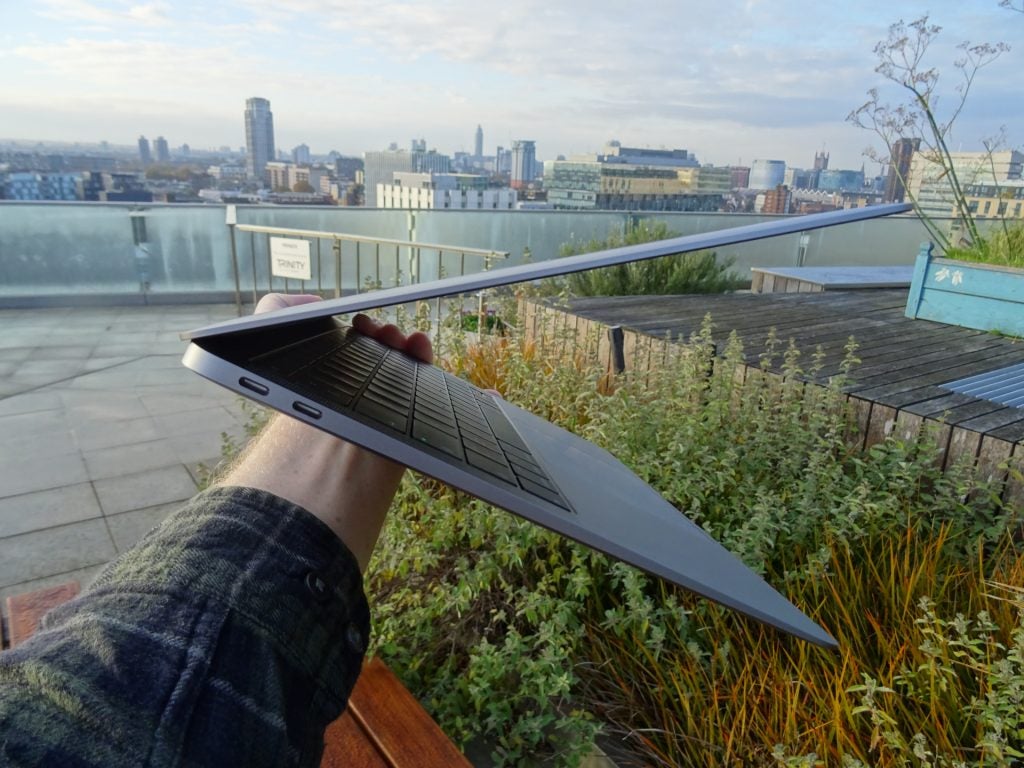
Apple MacBook Air 2018 – Battery life
Being unable to run an equivalent to Powermark – a program that simulates typical laptop use (Trusted Reviews uses Powermark to loop 10 minutes of simulated web browsing with five minutes of video streaming in laptop reviews) – makes it difficult to assess how well the MacBook Air’s battery compares with rivals.
What I can say, based on the real-world tests I performed, is that you should expect to get around 9-10 hours of power most of the time.
While working, I’d typically get through a standard nine-hour working day – tasks included writing articles, sending emails, creating playlists on Spotify and streaming them via Bluetooth to the office speaker – with around 10% of power left in the tank. This was with screen brightness set to 150 nits.
Keeping the screen brightness at 150 nits and setting the speaker volume to 50%, I used QuickTime to loop a 2min 30sec-long 4K video clip saved to the hard drive. The laptop achieved 9hrs 7mins worth of playback time.
I ran the same test with the 13-inch MacBook Pro 2018 (the quad-core Intel i7-8559U version), which gave 7hrs 33mins of local playback time.
Elsewhere, the device managed 10 hours of iPlayer action (all of Mark Kermode’s Secrets of Cinema and BBC Two’s Civilisations, FYI), all streamed in Full HD. The battery was at 2% as the credits rolled here.
Does Apple’s claim of being able to offer 13 hours of video playback time stand up? The small print on Apple’s site says that it calculated that figure by looping a Full HD iTunes movie with the screen set to “12 clicks from the bottom, or 75% [brightness]”.
For reference, I reached 150 nits by turning the MacBook Air’s screen down to approximately 50%. Apple doesn’t explicitly mention whether or not Wi-Fi or Bluetooth was turned off in its test, or the volume level the device was set to either. Assuming that all the radios are off and the speakers aren’t blasting at full volume, I’d say that you’d probably get 13 hours of playback time, at a stretch.
Based on my own experiences, a more realistic expectation for battery performance – whether you’re working or streaming media – would be around 9-10 hours, which is excellent. Anecdotal figures for the Surface Pro 6 and LG Gram were 7-8 hours and 12 hours respectively.
In terms of charging, it doesn’t take long for an empty MacBook Air to be filled all the way back up using the supplied mains adapter. I hit around 10-12% after 15 minutes on the mains, and 25-28% after half an hour. After 60 minutes, I’d typically hit around 40%. It took me around 2hrs 30mins to get back up to 100%.
Related: Best Intel processor
Apple MacBook Air 2018 – Specifications
Here’s how the specs for the MacBook Air 2018 range compare. The model sent for review has 8GB of RAM and 256GB of storage, 250.69GB of which is user-available out of the box.
Here’s a rundown of the MacBook Air 2018 range with pricing options and a full list of specifications:
- 8GB RAM, 128GB storage – £1199
- 16GB RAM, 128GB storage – £1379
- 8GB RAM, 256GB storage – £1399 (tested)
- 16GB RAM, 256GB storage – £1579
- 8GB RAM, 512GB storage – £1599
- 16GB RAM, 512GB storage – £1779
- 8GB RAM, 1.5TB storage – £2399
- 16GB RAM, 1.5TB storage – £2579
| MacBook Air 2018 | |
| Display | 13.3-inch Retina Display, 2560 x 1600 LED, 300nits |
| Processor | 1.6GHz dual-core 8th‑generation Intel Core i5 processor (Turbo Boost up to 3.6GHz), 4MB L3 cache |
| Memory | 8GB/16GB 2133MHz LPDDR3 RAM |
| Storage | 128GB, 512GB, 1.5TB SSD / 256GB, 512GB, 1.5TB PCIe-based SSD |
| GPU | Intel UHD Graphics 617 |
| Ports | 2 x Type-C USB (supporting Thunderbolt 3), 3.5mm headphone jack |
| Connectivity | 802.11ac Wi‑Fi, Bluetooth 4.2 |
| Misc | 720p FaceTime HD camera, Touch ID, T2 security chip, 3rd-gen butterfly switched keys |
| Dimensions | 4.1–15.6 x 304.1×212.4mm |
| Weight | 1.25kg |
| Battery | Up to 13 hours’ video playback (iTunes) |
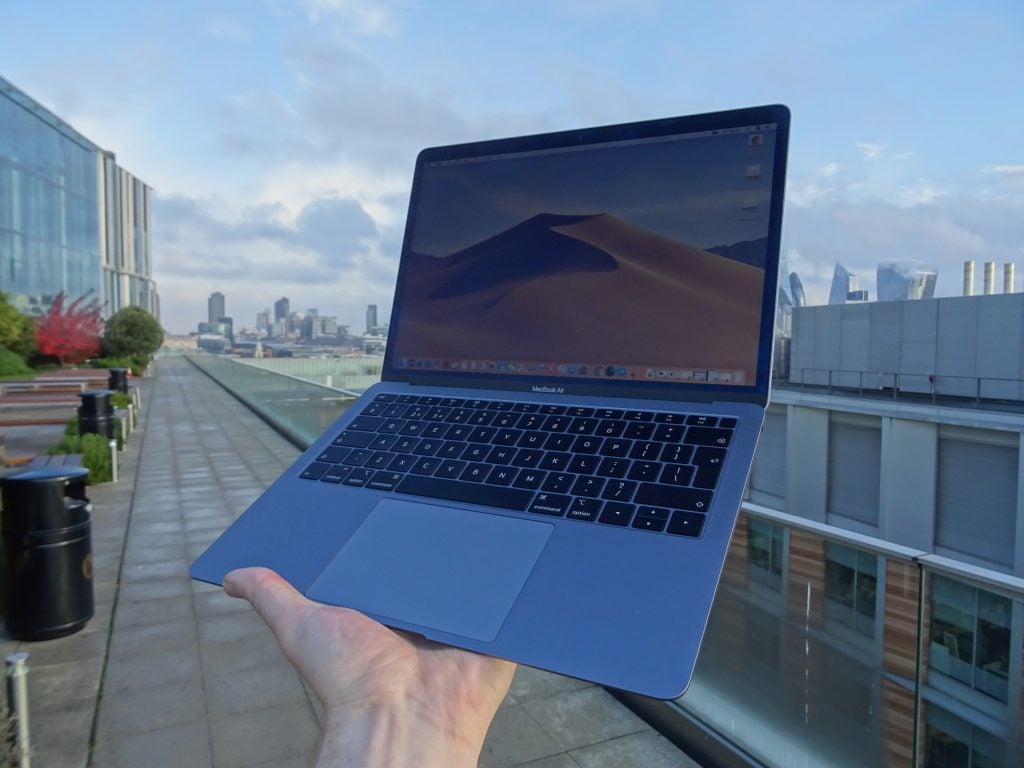
Why buy the MacBook Air 2018?
If you’ve been waiting patiently for an upgrade to the MacBook Air, then it’s no contest – this is a significant update that hugely improves on the softly-softly iterations we’ve seen over the past few years. The chunky bezels and low-res screens are gone, replaced by a much slimmer, smoother machine with a high-resolution Retina Display panel.
In many ways, the MacBook Air 2018 represents a less expensive way to get a semblance of the MacBook Pro experience. There are a lot of shared key features: the Retina Display resolution, extra security thanks to the T2 chip, Touch ID for easy and more secure unlocking, ports supporting the Thunderbolt 3 standard and third-gen butterfly switched keys.
If you want a powerful Apple laptop that’s primarily for working, but maybe you can’t justify the cost of shelling out for a MacBook Pro – or, you’re not a creative so you don’t need that extra power – then the MacBook Air 2018 is the device to consider.
However, there’s no getting away from the fact that, as great as the Thunderbolt standard is, you get just two ports here. That’s a real limitation, one that you can arguably sidestep if you buy the right dongles.
Consider that the LG Gram is a slim Ultrabook with plenty of connectivity options, though, and casual buyers who aren’t into the Apple ecosystem might be better served by one of these instead.
Also note that at the higher end of the MacBook Air pricing spectrum, you begin to stray into MacBook Pro territory too. A MacBook Air 2018 with 16GB of RAM and 1.5TB of storage will set you back £2579, while a 13-inch MacBook Pro 2018 with the same memory, slightly less internal storage at 1TB, but with a better processor and more powerful screen, will actually cost you a little bit less at £2529.
Verdict
The MacBook Air 2018 is a streamlined and powerful laptop brimming with up-to-date features.
How we test laptops
Unlike other sites, we test every laptop we review thoroughly over an extended period of time. We use industry standard tests to compare features properly. We’ll always tell you what we find. We never, ever, accept money to review a product.


